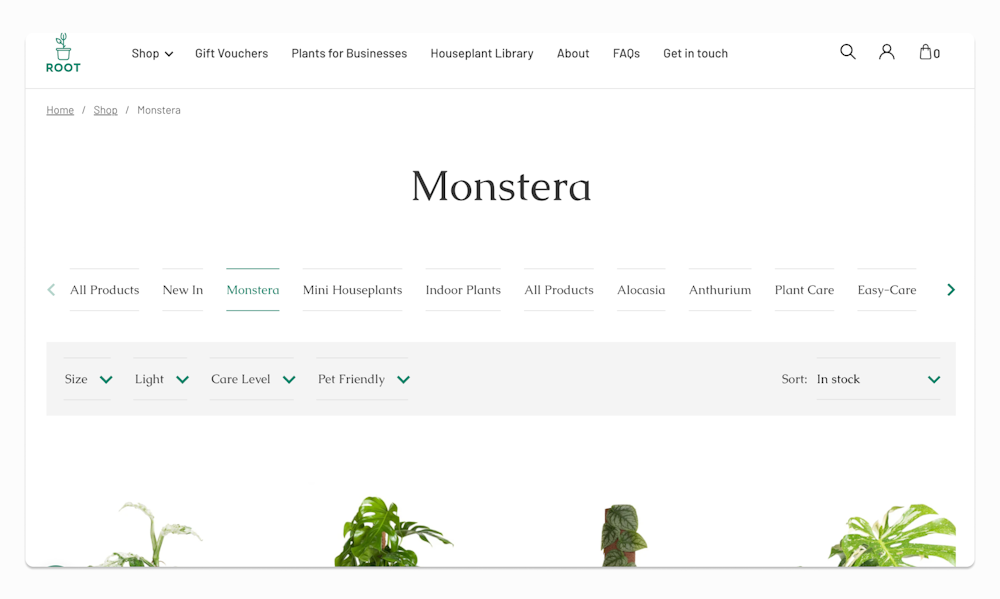The DatoCMS Blog
Shopify vs. Headless CMS: A false binary
TLDR
Shopify is excellent at everything eCommerce - catalog, cart, checkout, payments, fulfillment...
Yes, it has a CMS, but that’s limited to products, a blog, static pages, and some metafields. It works for small stores, but could become restrictive quickly.
A headless CMS like Dato is designed for structured content, localization, editor workflows, and cross-platform delivery. But, it doesn’t do checkout, and that’s the point.
At a small scale, one tool can often be enough. For non-commerce sites, just a CMS. For simple shops, just Shopify. But as brands grow, especially across regions, with heavy content and campaigns, most end up needing both.
False Binary
We often hear the same questions, just phrased a bit differently:
“We’re comparing DatoCMS with Shopify, how do you stack up?”
“We’ve been happy with Dato, but we’re thinking about moving to Shopify.”
“We’ve outgrown Shopify, should we be moving to Dato?”
It’s natural to frame it as an either/or choice. Both platforms store content. Both power websites. On the surface, it feels like an overlap. But in practice, they solve very different problems and come together quite well.
Shopify is an ecommerce engine with a CMSish feature set added. DatoCMS is a pure CMS. You can build with just one depending on your scope, but once projects grow past a certain size, you usually see both in the stack.
Case in point, peeps love the Shopify plugin for picking products in DatoCMS.
Another case in point, we got tons of partners building out dope projects using both, but more on that later.
Let's talk Shop-ify.
Legit, Shopify is among the best off-the-shelf eCommerce engines out there. It gives you product catalogs, variants, inventory, a checkout flow, payments, taxes, shipping, bells, whistles, and a massive app marketplace. That's before you even enter the rabbit hole of what you can do with Shopify Plus and Hydrogen.
Just thought of selling polka dot socks? You can get a working store online within an afternoon, which is why it powers shops for literally millions of small and mid-sized businesses.
If your site is essentially a “storefront + product descriptions + a blog post every now and then,” Shopify can handle it really well. For a small brand, Shopify often feels like the only tool you’ll ever need.
But.
Shopify also markets itself as having CMS features. Technically, that's true, but here’s what that means in practice:
You get products, collections, static pages, and one blog.
You can add extra data through metafields, but they still need to be defined by developers and the editing UI isn’t that intuitive.
The theme editor lets you drag and drop sections for a nice WYSIWYG feel, but it’s tied to your storefront theme and doesn’t scale well across multiple sites or campaigns once you level up your scale.
Content modeling is rigid. I mean this makes sense, they aren't a fully-fledged CMS with a schema builder.
Localization can feel clunky. Translations are tied to each individual field with no proper workflow for editors.
Content is storefront-bound. Repurposing it for apps, in-store screens, or other channels is possible, but paiiiinful.
For small-to-mid shops, this works great. For teams with huge eCommerce needs and bigger goals that extend beyond “product description plus add-to-cart,” not so much.
Let's talk Headless
Ok, now when I say "Let's talk Headless", what I really mean is "Let's talk Dato", because, well, familiarity.
Anyways.
DatoCMS is a proper headless CMS. You can model any type of content: campaigns, recipes, editorials, testimonials, landing pages, product pages... And editors get a slick interface to manage it all.
Localization is built in. You can create workflows with fallbacks, side-by-side editing, and permissions that let teams work without stepping on each other.
The delivery is API-first, so you can send the same content to your site, your app, your email system, your dishwasher, my dishwasher, or to your in-store displays without duplicating any content or code. Developers get clean GraphQL and REST APIs. Editors get structured fields instead of free-text boxes.
However. What you don’t get out of the box is a checkout system. No carts, no payments, no fulfillment. Which is fine, because that’s exactly where Shopify excels.
That means if you're building a simple shop with a Headless CMS, you can, BUT you'll need something else like react-use-cart to handle your cart, and something like Stripe to handle payments. OR go all in with something like a commercetools or Commerce Layer to be your entire eCommerce engine.
But that also means, if you're building a bigger eCommerce project, you just tie up Dato with Shopify, and it's a win-win.
When either isn't enough by itself
If you’re launching your first store, you sell a small set of products, and your marketing content is minimal, Shopify can carry you. You’ll get your storefront, checkout, and product catalog all in one place.
Think of a local coffee roaster. Their needs are product listings, a subscription app, and maybe a page explaining their sourcing. Shopify covers all of that without needing a CMS like us in the stack.
On the other hand, if you’re not selling products online, you don’t need Shopify. A SaaS site, a media brand, or a corporate site with multiple languages doesn’t need a checkout engine, they just need structured content.
DatoCMS also makes sense if your ecommerce is handled elsewhere. Some companies roll their own checkout flows with Stripe or use alternative commerce backends. In those cases, DatoCMS powers the content, and the payment layer is something entirely different.
Things get interesting once you scale. A growing DTC brand quickly runs into Shopify’s limits. They need campaign pages that aren’t tied to Liquid templates. They need regional sites with localized marketing content. They need editors who can launch seasonal campaigns without bothering the devs.
That’s where the Shopify + Dato pairing becomes really cool to work with. Shopify runs the transactional side like the catalog, the checkout, and the fulfillment. Dato manages the rest of the digital stuff like the homepage, campaign pages, localized content, editorial stuff, and distribution into multiple channels.
For devs, this means no more trying to bend Shopify’s page and blog system into a general CMS. For editors, it means working in a proper content interface instead of metafield spreadsheets.
But this sounds very preachy, so let's look at how we're seeing this combo work in the real world.
What we're seeing
To prove the point, here are a few examples where Shopify and DatoCMS work side by side in production, showcasing different types of use-cases, from full-on-ecommerce-retail-brand, to not-ecommerce-brand-with-things-to-sell.
The Laundry Story by Cool&

Built as a headless Shopify Plus e-commerce platform, The Laundry Story offers a seamless and modern user experience. The website boasts stunning blog posts with cross-sell functionality, easy subscription options for your favorite products, and a modular page structure, thanks to Cool&.
Root Houseplants by Attach Digital

Root’s older Wix site was slow with a fully-loaded time over 16 seconds causing issues for customers. As Root grew, moving into a new larger warehouse and opening their second physical store, they knew they needed a new website that could grow with them and offer more ecommerce functionality than Wix provided, so Attach Digital hooked them up with a snappy Shopify+Dato combo.
Archie Rose Distilling by MindArc

Archie Rose’s site uses Shopify Hydrogen for commerce for their React website with DatoCMS as the CMS. Hydrogen gives them a modern, performant storefront, while DatoCMS feeds in campaigns, product stories, and editorial content. The setup means developers from MindArc aren’t locked into Shopify’s page builder, and editors can still manage content in a structured way.
Ricola by DEPT

Ricola’s global marketing platform, built by DEPT, integrates Shopify directly into an Astro and DatoCMS-driven site. Dato handles localization and campaign content across multiple regions, while Shopify powers DTC sales. For a heritage brand with global reach, this pairing makes it possible to keep storytelling flexible while keeping ecommerce streamlined.
A practical decision framework
So. Now that we've seen that the two aren't "interchangeable" as many think, the way to think about making a decision is simple.
Are you selling online? If yes, you need Shopify or some other commerce engine.
Are you publishing content that goes beyond product descriptions? If yes, you need a CMS.
Do you expect to run campaigns, manage localization, or deliver content into multiple channels? If yes, you’ll want Shopify and DatoCMS working side by side.
At small size, you can get away with one or the other. At scale, you almost always need both.
So the next time you’re wondering whether to choose one or the other, stop. That’s the wrong question. The right one is how far are you planning to scale, and that's when we chat to see what's the best solution for your use case.


